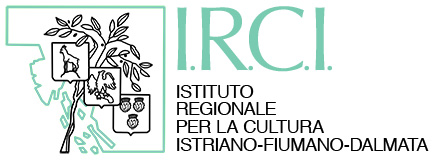

In the Italian areas of Istria, men’s traditional dress was worn for more decades than the women’s one, thus proving wrong the general rule according to which men’s dress is less conservative. Up to the first world war, inhabitants of Dignano wore clothes made of local wool on working days as well as on holidays. The wool could be lighter (called in the local dialect “grèiso”) or heavier (gurgàn) according to the time of the year. The following description is based on Domenico Rismondo’s observations and on the statue of the Museum of Rome. The men’s shirt (camèisa) was made of hemp or linen (lino tila de casa), had a high standing collar, fastened under the chin with a thread button. The shirt was decorated by a vest with vertical pleats. The cuffs were simple and fastened with a button. Over this shirt they put a sleeveless waistcoat without collar (camisulèin). The two sides of the waistcoat crossed on the breast and were tied up with cloth bands. On working days, the shirt was made of natural brown wool, whereas on holidays it was first red and black later on. The photo shows an example of a typical men’s dress in the period between the two world wars. In summer, the shirt for working days was white and made of hemp and bonbàs cotton. There was also a waistcoat similar to the “camisulein” that came with sleeves and was called camisola. It was buttoned up on the chest and the sleeves were closed at the wrists using clasps. It was usually of brown wool or dyed in black in some modern versions. On top of the camisulein came a short jacket of the same fabric with curito sleeves. It had no collar and was buttoned up with metal hooks, the sleeves had narrow slits at the wrists. The black or brown woolen pants finished at the calf, where they had a 5 to 8 cm long slit in the inside seam. They were fastened by a band called sensito (see sensalèina) around the waist and tied on the back with a leather strap decorated by coloured silk ribbons. On the front it was tied with the other strap through a double slip knot that fastened the front part. More recently a flap was added to the pants fly, extending from one pocket to the other, with a buttonhole in the middle where two hooks were positioned. The belt was under the flap and had a button inserted in the buttonhole. All pants were lined with muslin (musolèina). The men wore them without underpants. In the most recent period pants became longer, down to the ankles.